Oroville dam: Incredible photos show water cascading down hill amid fears largest dam in the US could collapse
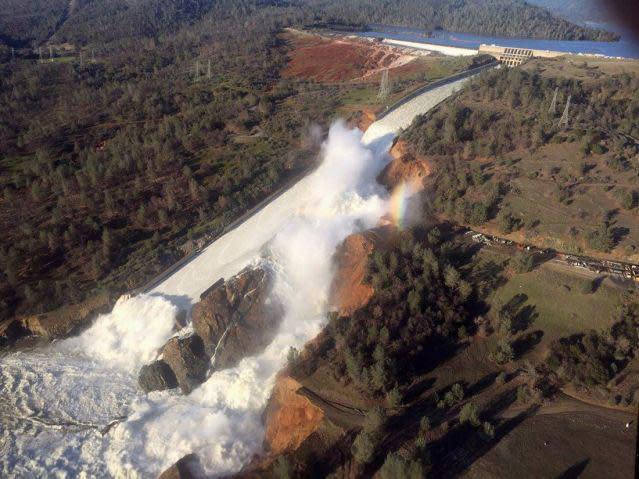
The water level has dropped behind the US's tallest dam, reducing the risk of a catastrophic spillway collapse and easing fears that prompted the evacuation of nearly 200,000 people downstream.
Officials from the California Department of Water Resources are set to inspect an erosion scar on the spillway at the dam on Lake Oroville, about 150 miles north-east of San Francisco.
Authorities ordered evacuations on Sunday for everyone living below the lake out of concern that the spillway could fail and send a 30ft wall of water roaring downstream.Officials feared safety features of the dam would fail after an emergency earth slipway attached to the dam suffered significant erosion damage.
Stormy weather left Lake Oroville less than two metres from the top of the dam, causing water to cascade down the damaged slipway.
A change in conditions gave engineers working to repair the erosion a brief respite as water receded, but up to 10 inches of rain is expected for the California Mountains later in the week.
Water is being released in an attempt to ease the pressure of the 4.3 km square lake - which is at 100 per cent capacity - on the structure.
The dam is the largest in the US and the structure is close to the town of Oroville, population 16,000.
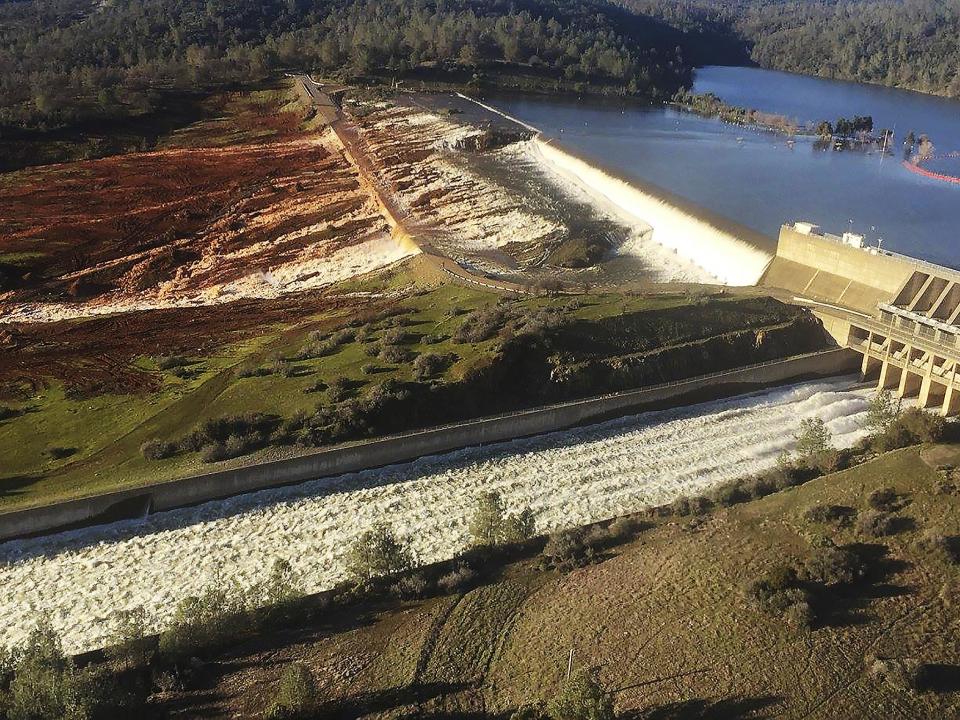
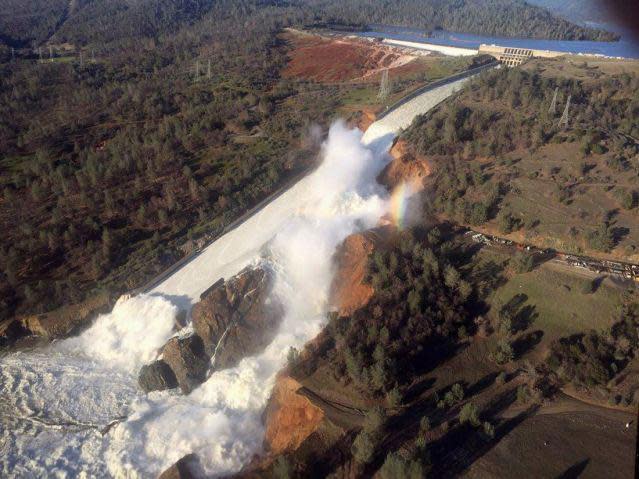
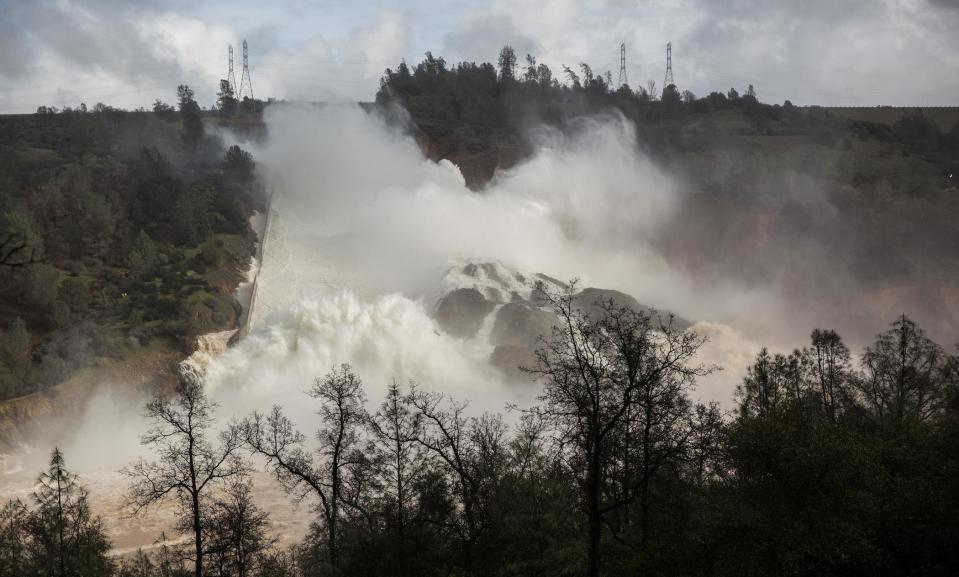
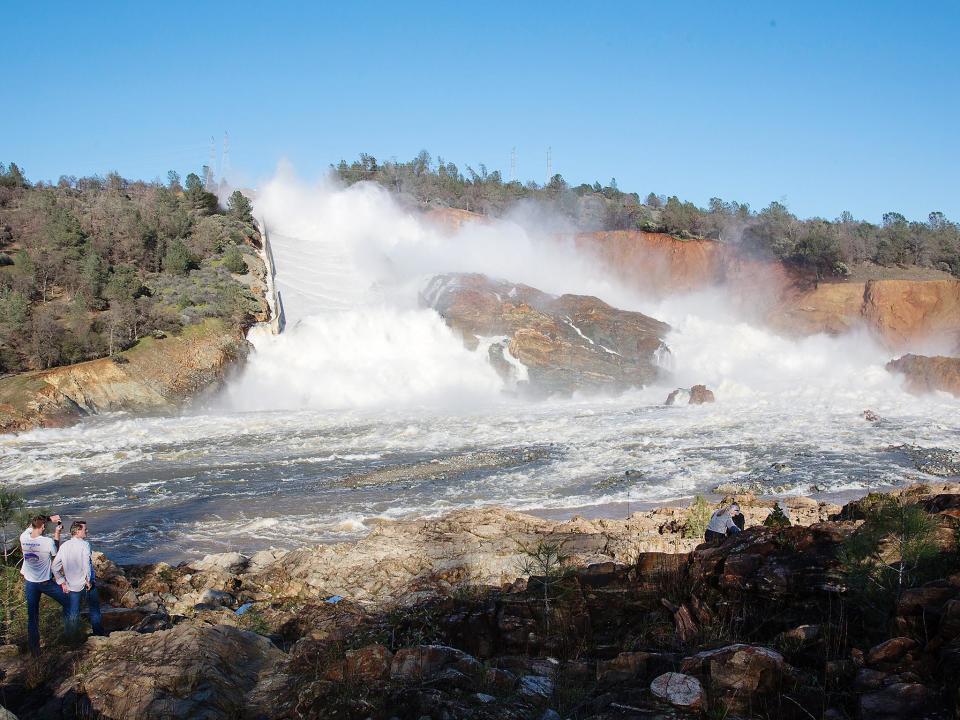
The surrounding area has been evacuated of nearly 200,000 people in preparation collapse.
The situation remains precarious and it is is unknown when they will be able to return home.
It emerged this week that federal and state officials ignored warnings from local groups about the impact severe weather could have on the dam’s capabilities.
Built in 1968, the structure is 230 metres high, nearly nine metres taller than the Hoover Dam, the next largest in the country.
The dam surrounds Lake Oroville, the second largest artifical lake in American, and controls the flow of the Feather River. It has also been used for hydroelectric power.
In drought prone California, dams are viewed by engineers as essential for water storage.

